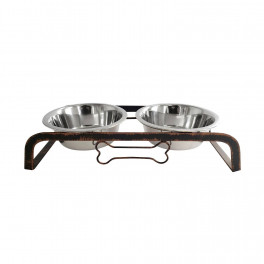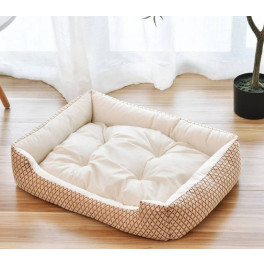Damaged walls and furniture are a problem most pet owners will face at some point, especially when their animals are just babies. We love our cat, but we don’t love it when we need to repair claw marks on wood in our homes. Our beloved puppy has also been known to tear up a banister or door frame every now and again, leaving us with damaged, beat-up walls and furniture. Luckily, pet-related damage can be fixed and requires only a day or two of your time.
Some materials you will need are:
- Putty or epoxy
- Putty spatula
- Sandpaper, handheld sander, or oscillating device
- Tape
- Paint or stain
- Wood finish repair kit (optional)
1. Assess the Damage
If you have very minor scratches, a few small holes, or scuff marks, you might be able to use a walnut or a cheap wood finish repair kit to fill in the marred wood. For places where damage is so severe it can’t simply be buffed out, you’ll need to fill in the damaged space and stain or paint over the wood to give it a smooth, even finish.
2. Sand Your Troubles Away
Start by sanding away the loose fragments and splinters so that your putty or epoxy can properly grip the wood.
3. The Right Stuff
After the area has been sanded, you’ll want to mix your putty or epoxy. There are many different options to choose from when selecting a putty or epoxy, so you will want to do a bit of research to make sure you are getting the right one for your particular needs.
If you chose a putty that requires water, make sure you add the right amount of water so you get the correct thickness, otherwise your filler might drip or refuse to adhere to the damaged surface.
4. Smooth Operation
Use a putty spatula to apply your filler, smoothing the surface as you go. Try to get everything as smooth as possible to minimize the amount of sanding you will need to do later.
5. Sleep on It, Then Repeat
Let the putty dry overnight. Once everything is dry, it is time to sand again! Depending on the putty you chose, you will want to employ a fine grit sandpaper, perhaps even a handheld sander or oscillating device to guarantee an even surface.
6. Getting Ready to Paint
Use your sandpaper to smooth out the putty completely before you begin painting. Once the surface is smooth, you’ve taped off anything that needs taping, and laid down a drop cloth to catch any spills, you can paint over the damaged spots.
It is possible to stain the wood instead of painting if you don’t think paint is the right look, but you will need to choose the right putty, the right stain, and the right color, otherwise you won’t get the filled spots to match the rest of the wood. You can use paint chips and stain samples either online or from the hardware store to determine which color selection is right for you.
Once everything has been painted, there should be no trace of the damage, leaving you with beautiful, unblemished fixtures. Now all that’s left is training the animals not to chew and scratch the wood!
























